August 2025 witnessed a sudden explosion of low-cap tokens, sending the cryptocurrency rankings "spinning". Unexpected names like TROLL, MEMEFI, and MYX surged dramatically, with growth rates exceeding 2,000%, turning small investments into millions of dollars in assets.
This event quickly drew attention from both professional investors and risk-taking traders, sparking a wave of FOMO across the crypto community. However, beneath the shiny surface lies considerable skepticism: Is this a sign of a new trend forming, or just a pre-scripted act in the world of decentralized finance?
The low-cap frenzy: When altcoins surge and underlying risks accompany
The cryptocurrency market in August witnessed the surprising rise of small-cap tokens, amidst a resurgence of altcoin excitement. Leading the charge was MYX, a name that shocked with a surge of 1,957% in just a few days, pushing its market cap past 200 million USD and sending the token price above 2 USD.
While many investors enthusiastically call MYX the "new star" of the altcoin market, some analysts quickly spotted unusual signs, suggesting that this rapid increase is not entirely due to natural demand, but could be a result of an organized "pump", through liquidity and trading volume manipulation strategies.
"It feels like everyone is diving into a huge gamble – everyone thinks they will hit it big, but most will get 'swallowed' by the market," a specialist bluntly warned.
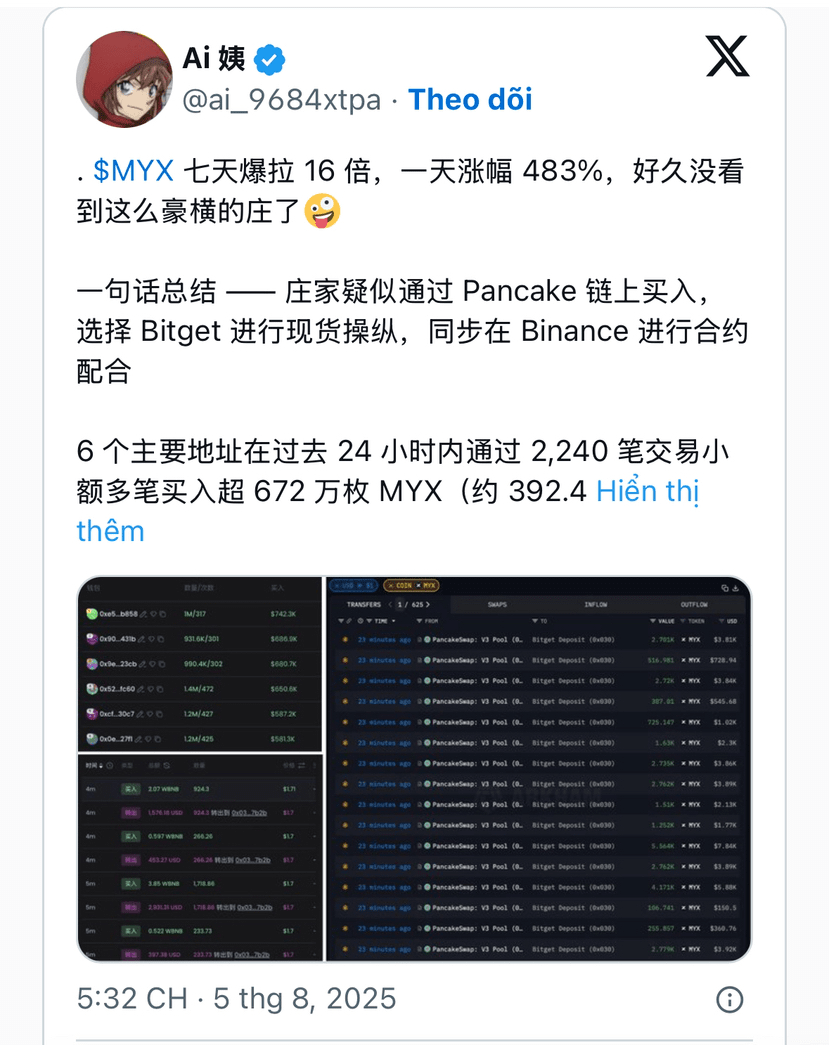
This warning is not unfounded. Price increases not based on fundamental factors often lead to violent corrections, especially when the transparency and legality of projects remain ambiguous.
Another noteworthy case is MEMEFI, a token that surprised with a nearly 200% increase right after the announcement of its delisting from Binance Futures. However, this surge is believed to be not from actual buying demand, but a result of mass short liquidations, driving the price up sharply.
Despite the strong increase, MEMEFI is still down over 80% from its previous peak, while the development team remains silent and lacks transparency, further raising doubts about its long-term viability.
One cannot overlook the name TROLL – a meme token built on the Solana network – as it just recorded a spectacular increase of 210%, setting a new all-time high. Previously, Bitcoin Magazine reported on a story causing a "storm" in the community about a lucky trader who turned an investment of just 22,800 USD into 2.48 million USD thanks to the meteoric rise of this memecoin.
However, behind those life-changing stories is a warning from experts: tokens driven by trends like TROLL often rise as fast as a bullet – but can also "evaporate" in the blink of an eye. With their nature being driven more by market emotions than by fundamental factors, memecoins always carry high risks and unpredictability.
The Binance effect and the hidden strength of low-cap tokens: An opportunity or a digital minefield?
The crypto market in August witnessed a notable trend: small-cap tokens unexpectedly surged, attracting the attention of both retail and institutional investors. Behind this growth wave is a combination of trading strategies, the listing effect on Binance, and the easily manipulable nature of the low-cap market.
Analyst Ape – a familiar name in the crypto community – pointed out two factors driving the insane surge of these tokens:
Listing on Binance Futures.
Market cap ranging from 20 to 60 million USD.
According to him, tokens with a market cap under 150 million USD, especially if listed on Binance Futures, are often favored targets for momentum traders and market makers looking to create rapid volatility.
"Strong sell-offs after listings and seemingly 'static' charts are actually setups for potential price increases. They trigger accumulation buying when news or the right liquidity leverage hits," Ape commented.
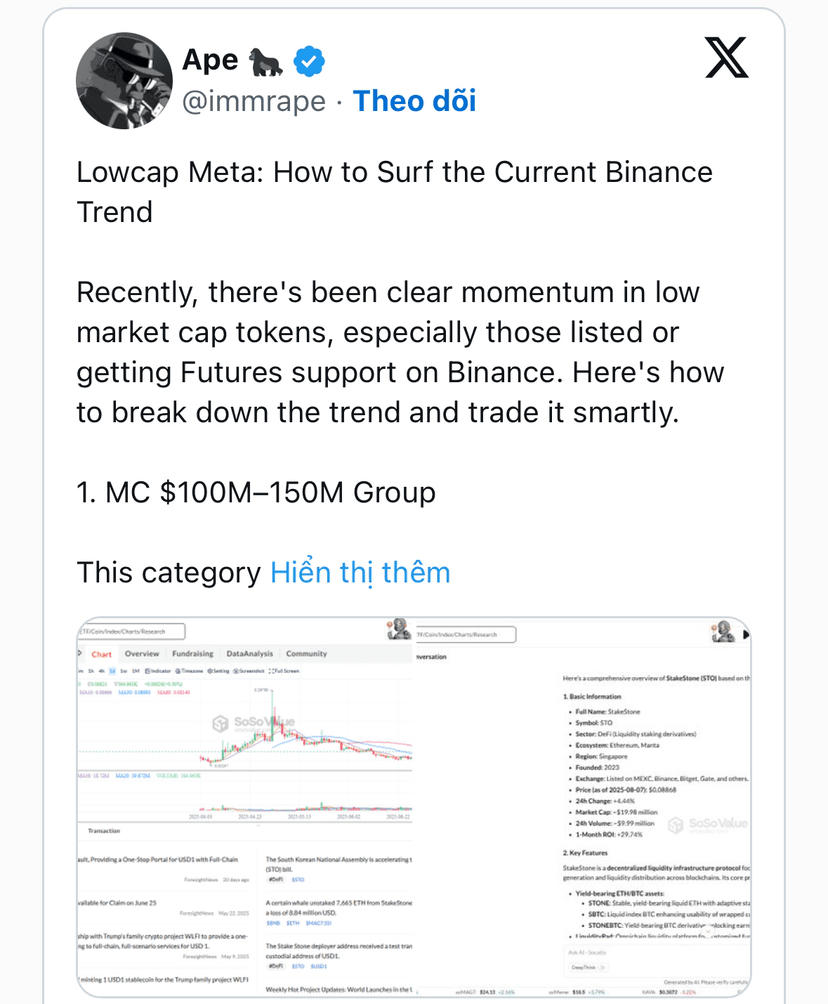
Analytical tools like SoSoValue are being widely used to hunt for "treasures" in small market caps before the FOMO wave arrives. However, this strategy is not for the faint-hearted.
Many low-cap altcoins outside the top 300 are recording unusually high open interest (OI) compared to their market cap – a red flag for investors.
"When OI exceeds a healthy level compared to market cap, you are looking at a market that is easy to manipulate, volatile, and hard to read. These tokens can liquidate up to 90% of traders, regardless of whether you buy or sell," analyst Joao Wedson explained.
Despite the risk warnings, the reality is that some investors have pocketed enormous profits. Wallets that once held TROLL – a meme token on the Solana network – which seemed forgotten, have suddenly "come back to life" with profits ranging from 1,300 to 6,000 times, equivalent to millions of USD in unrealized gains.
Interestingly, many of these investments come from traders who have been "asleep" for months, not trading or intervening. Once again, the cryptocurrency market proves that "staying still can also lead to big wins" – if you’re lucky enough to catch the right cycle.
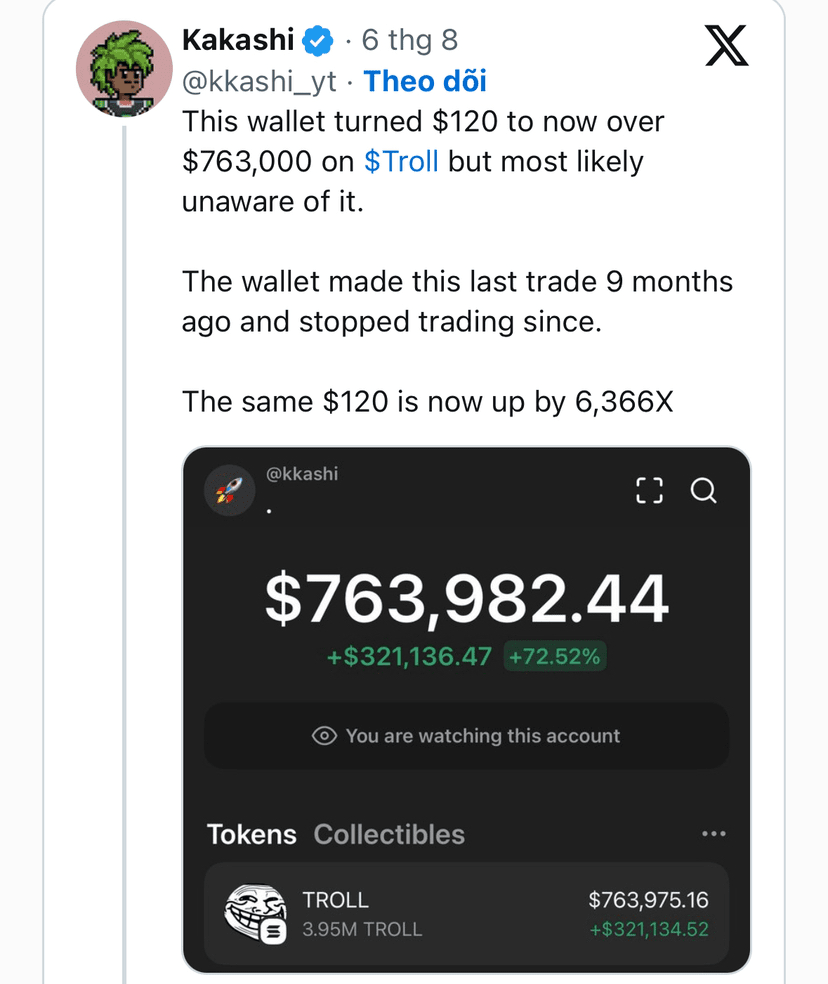
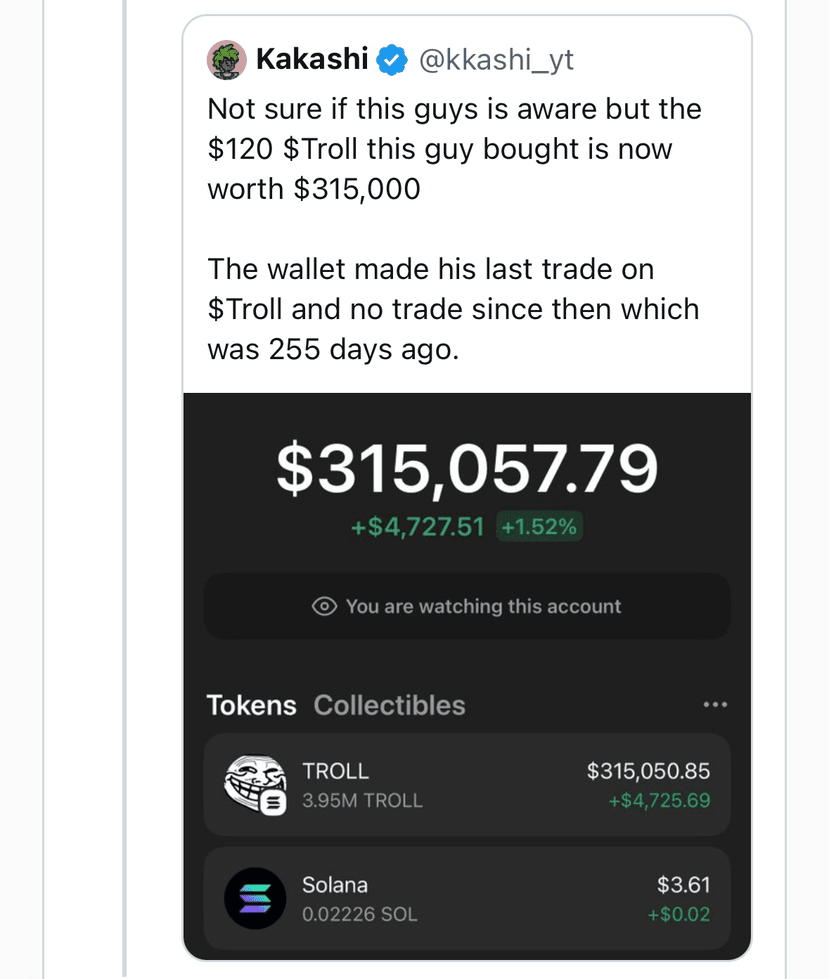
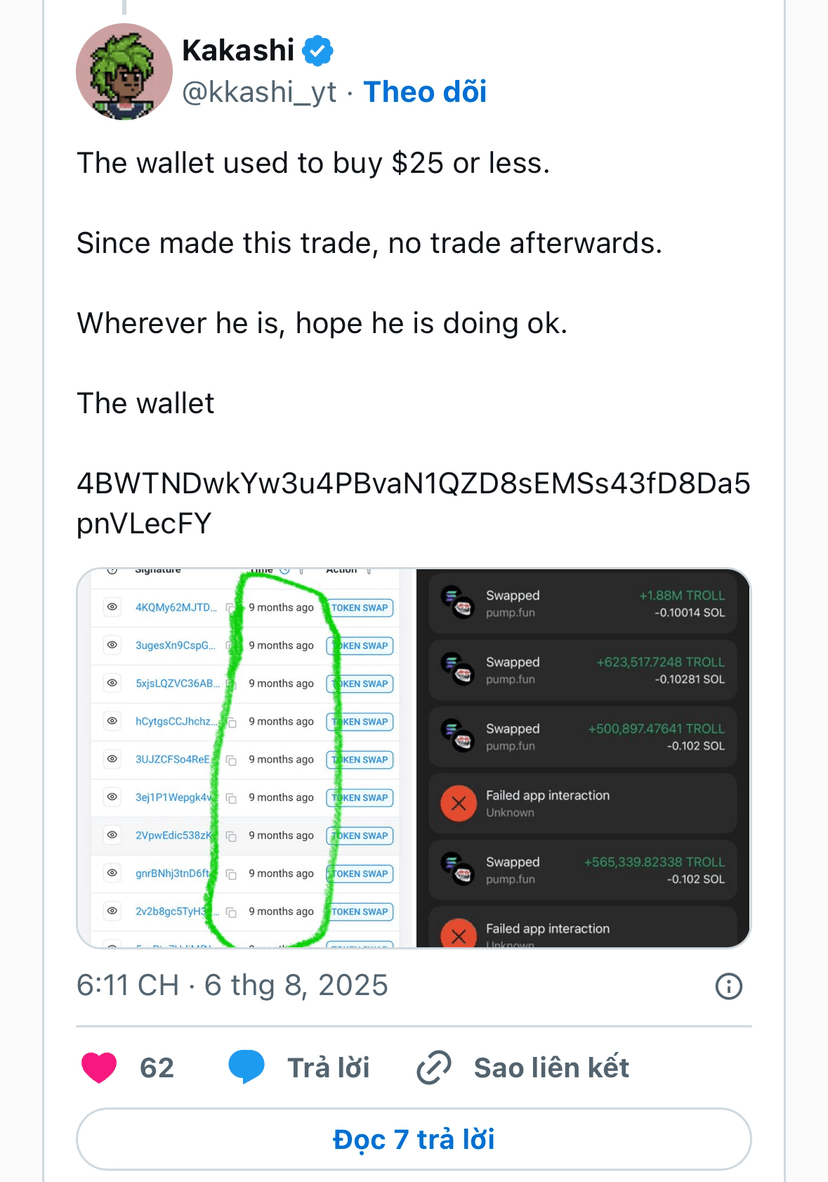
Undeniably: the small-cap token craze in August has truly "changed the lives" of a group of lucky investors. But behind those million-dollar figures, analysts have yet to find common ground:
Is this a sign that money is quietly shifting towards small-cap groups, opening up a new growth cycle?
Or is it all just a short-term dance in a "digital minefield", where most will burn their accounts for a few to gather rewards?
In the world of crypto – where 1,000x profits always come with the risk of "going to zero" – low-cap tokens are a double-edged sword: they can help you soar rapidly, but can also wipe everything out in a single correction.
If you have the guts, understand the game, and know how to manage risks – the door of opportunity is still open. If not, it may be time to hold your wallet tight and observe from the sidelines – at least until the dust settles.